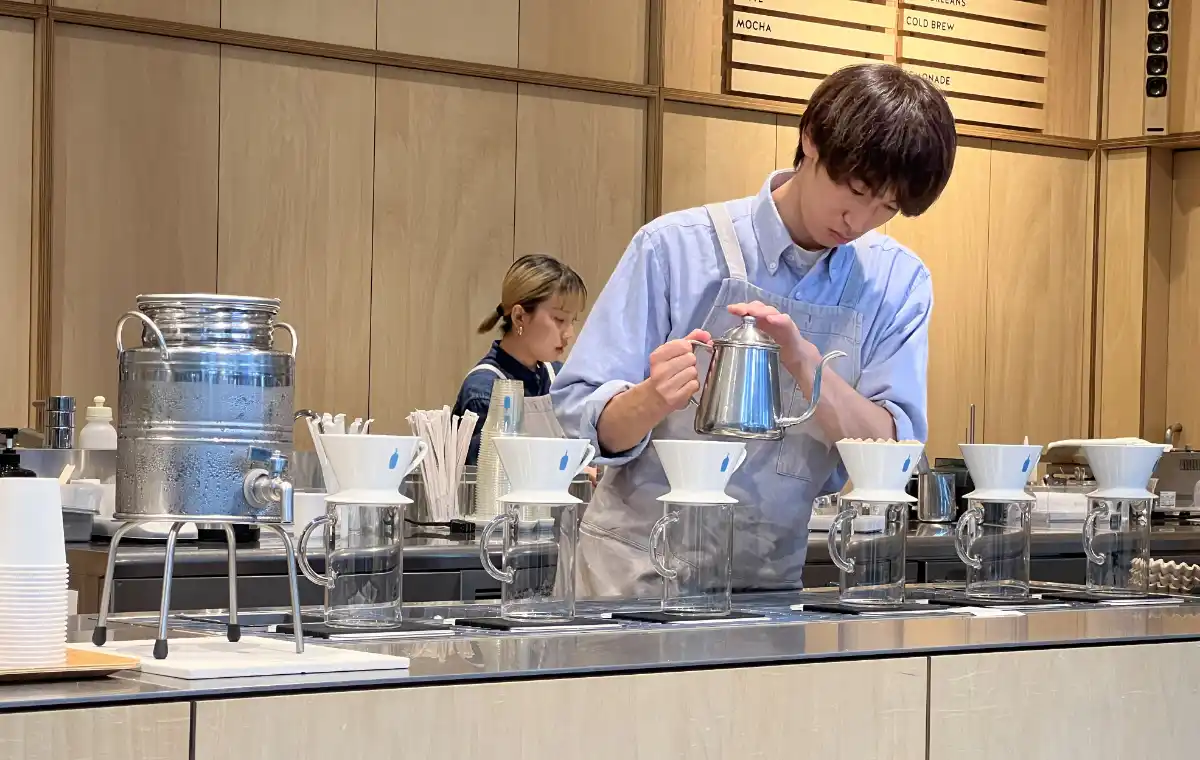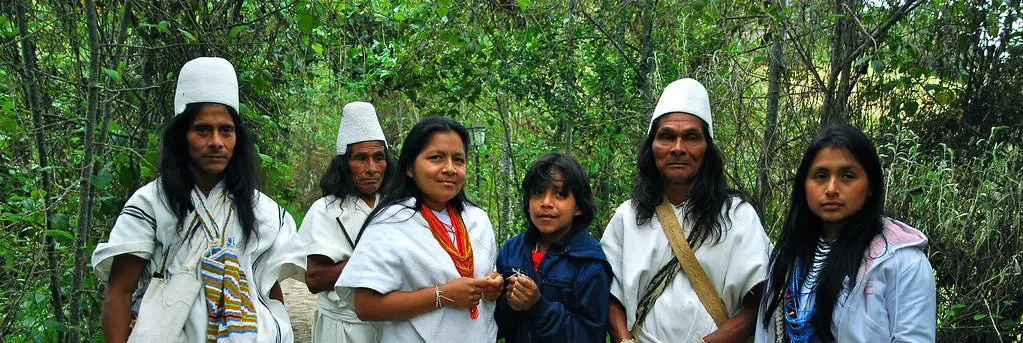I do not like adding anything to my coffee, turning a serious coffee into a dessert instead. But I make one exception, and that is coffee jelly.
Coffee jelly is a delicious and refreshing dessert that combines the rich taste of coffee with the unique texture of jelly. It is a favorite summer treat in Japan, light and refreshing. In Japanese, it is コーヒーゼリー, and it is served not only in summer but year-round in many coffee shops and casual restaurants in Japan. You can also buy ready-made coffee jelly in supermarkets and convenience stores. Its popularity has been unbroken for almost a century in Japan. In this post, I will explore the history, preparation methods, variations, and serving suggestions for coffee jelly. It’s so easy you can even make it at home.
History of Coffee Jelly
Coffee jelly has a long history in Western and Japanese cuisines. The dessert is believed to have originated in England in the early 19th century. According to cookbooks from that era, it was made using coffee, sugar, and calves’ foot jelly. It was considered a healthier alternative to hot coffee, as the gelatin was believed to absorb excess stomach acid and prevent acid reflux.
In the early 20th century, the American company Jell-O introduced a coffee-flavored gelatin mix, but it never gained widespread popularity outside New England. The famous Boston landmark Dugin Park restaurant had it on the menu until it closed its doors for good after almost 200 years in 2019. They made good use of their day-old left-over coffee from the restaurant.
In Japan, coffee jelly’s popularity began during the Taishō period (1912-1926), when it was developed as a modern and fashionable dessert inspired by European molded jellies. Along with coffee, this dessert quickly gained popularity among the Japanese youth, who were enamored with Western culture. Over time, coffee jelly has become a staple in Japanese coffee shops and family restaurants. Convenience stores throughout the country carry coffee jelly in small plastic cups for take-out.
Coffee Jelly served in Restaurants
When visiting Tokyo, don’t miss trying coffee jelly at the Hilltop Hotel in Ochanomizu. The Hilltop Hotel, or 山の上ホテル in Japanese, is a cozy hotel with a charming nostalgic atmosphere, excellent restaurants, and impeccable service.
One of their restaurants is the Coffee Parlor, serving light meals, gorgeous desserts, and cakes.
I tried their famous coffee jelly, one of the best I ever had. Their secret is not to use leftover coffee but a rich cold water drip coffee, giving their coffee jelly an incredible richness and depth without any bitterness or harshness. It is topped with a scoop of savory vanilla ice cream, creating a harmonious dessert.
Another favorite is the coffee jelly at the Ignis Café in the nostalgic and charming Yanaka neighborhood in Central Tokyo. The closest subway station is Sendagi. This café specializes in high-end coffees and is a must-go for serious coffee lovers.
Coffee Jelly at Hilltop Hotel
Coffee Jelly at Ignis Café
Pura Vida.
What is Cold Water Drip Coffee?
In case you wondered what cold water drip coffee is that the Hilltop Hotel is using. It is a centuries-old variation of cold brew coffee introduced first by the Dutch in the 1600s. You can see their drip equipment in the restaurant.
The cold water drip at the Hilltop Hotel
How is Coffee Jelly Made?
Making coffee jelly is dead simple, as you have to deal with only three simple ingredients. But the end result depends very much on the quality of each of them. One bad choice can ruin your efforts.
Coffee
The primary ingredient in coffee jelly is, of course, coffee. Instant coffee powder is sometimes used for convenience and ease of preparation, but if you are a serious coffee lover, you better choose freshly brewed coffee. Instant coffee has this “canned” taste that will not go away in coffee jelly. You better use espresso, pour-over coffee, coffee made in a moka pot, a French press, or cold brew coffee. These real coffees will deliver a much more robust and authentic flavor.
A big NO NO is leftover coffee from the day before. If you know the taste and smell of coffee sitting in the office coffee maker for over an hour, you know it’s a bad idea. Using this would be a total culinary defeat.
Decaffeinated coffee would not be my choice, but it can be used for those sensitive to caffeine.
Using top-quality single-origin coffee will satisfy even the most discerning coffee aficionado.
Gelling Agent
Traditionally, gelatin has been the go-to choice in the West for creating coffee jelly. Gelatin is cheap, colorless, and flavorless. It consists mainly of hydrolyzed collagen, a protein. As such, it is even good for your health. But for some folks, it is not an acceptable choice for religious or ideological reasons, as gelatin powder is made from body parts of cattle, chickens, pigs, and fish.
In Japan, coffee jelly is sometimes made with agar-agar, or Kanten in Japanese. It is derived from seaweed and thus a vegan-friendly alternative. Agar-agar is very low in calories and has about 94% soluble fiber. Important minerals like manganese, magnesium, folate, and iron are present in significant amounts.
Agar agar is used in many guilt-free Japanese desserts, like fruit jelly, pudding, and coffee jelly.
Sweeteners and Flavor Enhancers
Sugar is typically used to sweeten coffee jelly, balancing the eventual bitterness of low-quality coffee and creating a more dessert-like flavor. Brown sugar, in particular, can add a deep note to the dessert, while white sugar makes for a cleaner, more straightforward sweetness. Alternative sweeteners, such as honey, maple syrup, or artificial sweeteners, could be used to suit individual tastes and dietary needs.
Other flavorings, such as chocolate, cinnamon, or vanilla, can be added to enhance and complement the coffee taste. Kahlua coffee liqueur is also an interesting add-on. Experimenting with different flavor combinations can yield exciting and unique variations of the classic coffee jelly.
But honestly, why would you even think of flavoring your coffee jelly? Is the coffee so bad that it needs flavoring?
If you don’t like the taste of coffee, then you shouldn’t make coffee jelly in the first place.
Optional - Topping
Place a little fresh whipped cream on top for a visually pleasing dessert. Condensed milk, half and half, or coffee creamer is sometimes used as a cheap alternative, but in my view, it’s not an ideal choice.
Instead, you can experiment with coconut milk or almond milk. This adds an exotic note and is very healthy too.
Another possibility is to top it up with real whipped cream. The stress is on REAL; stay clear of the spray can version.
Vanilla ice cream goes very well with coffee jelly too.
Making Coffee Jelly at Home
The coffee jelly recipe is simple and straightforward:
- 2 cups of strong black coffee
- 1/4 cup water
- 1 tablespoon powdered gelatin
- sugar to taste
Mix the gelatin powder with the water in a small bowl. Gently heat the coffee and stir the gelatin/water mixture in until the gelatin is completely dissolved. Adjust the sweetness with your favorite sweetener. Set aside to let it cool down a bit.
Pour into dessert glasses and refrigerate until solid, between 3 to 5 hours. Alternatively, you can pour the mixture into a shallow baking dish. That way, you can later cut the jelly into cubes for a different presentation.
For easy Japanese Coffee Jelly, replace the powdered gelatin with agar-agar, resp. kanten powder, which you can get in Asian grocery stores or online.
Gelatin powder or agar may be different depending on the manufacturer. It’s good practice to follow the instructions on the package for the right amount of gelatin or agar. But you may have to experiment a bit to get the jelly texture right. What you want is a soft, silky consistency for maximum enjoyment.
You can keep the jelly 1-2 days in the fridge.
Variations
Coffee jelly is a highly adaptable dessert, and its flavor profile can be easily customized to suit individual preferences. Some possible variations and adaptations include:
- Adjusting the coffee’s strength and sweetness creates a more intense or milder flavor.
- Use flavored coffee or add extracts, such as hazelnut or almond, if you have only low-quality coffee at hand.
- Replacing the gelatin with agar-agar or other gelling agents for a vegan or vegetarian-friendly version.
- Using alternative sweeteners like honey or maple syrup for a different flavor profile.
Coffee Jelly Drink
For a refreshing and unique beverage, try incorporating coffee jelly into a drink:
- Prepare coffee jelly cubes using either the traditional or Japanese recipe.
- In a large glass, combine 1/2 cup of cold coffee or cold brew, 1/2 cup of milk, and a sweetener (optional).
- Add a handful of coffee jelly cubes to the glass and stir gently to combine.
- Serve with a straw and enjoy as a delightful, caffeinated treat.
On top, you can place a scoop of vanilla ice cream or whipped cream if you like.
Health Benefits of Coffee Jelly
While coffee jelly is undoubtedly a delicious dessert, it also boasts some health benefits. Its primary ingredient, coffee, is a rich source of antioxidants that can help to reduce inflammation and protect against various diseases such as heart disease, stroke, and certain types of cancer.
Gelatin is beneficial for health as it contains protein and several essential amino acids. The collagen in gelatin helps improve skin elasticity and hydration, reducing the signs of aging and promoting a youthful appearance. It strengthens joints and bones, reducing the risk of arthritis and osteoporosis. Gelatin also contains glutamic acid, which helps to promote a healthy mucosal lining in the stomach and intestines.
Agar-agar is made from red algae and is suitable for a vegan diet. It is very low in calories and consists mainly of soluble fiber. It expands in your intestines and can stimulate a bowel movement. It is filling while low in calories and sometimes incorporated into a weight-loss diet.
From a health perspective, there is one caveat: Go easy on sugar, as too much sugar will counteract any health benefits from an otherwise delicious and healthy dessert.
Conclusion
Coffee jelly is a light and refreshing chilled dessert that combines the rich taste of coffee with the unique texture of jelly. With its origins in both Western and Japanese cuisines, this treat has captured the hearts of coffee lovers and dessert enthusiasts alike. Its adaptability and versatility make it a fun and exciting dessert to experiment with, even at home. And if you have a chance to travel to Japan, don’t miss trying it where it is best.






